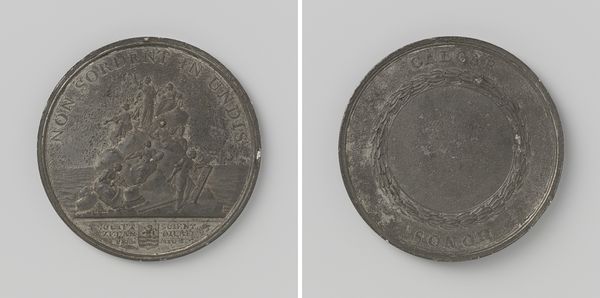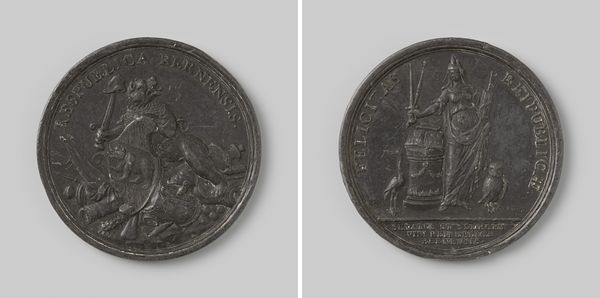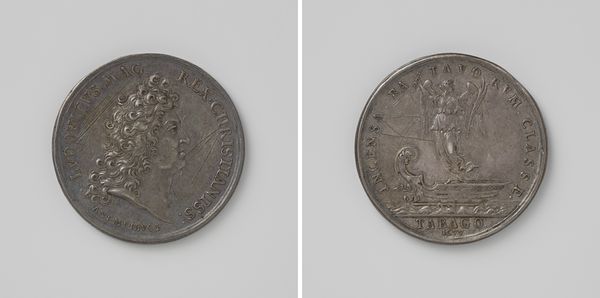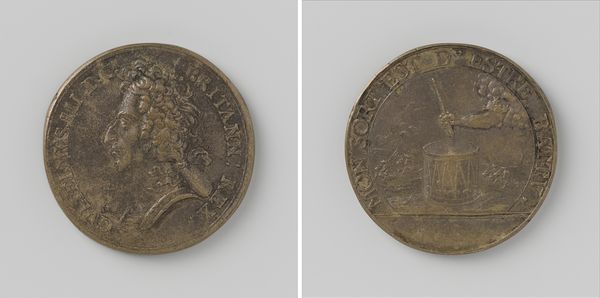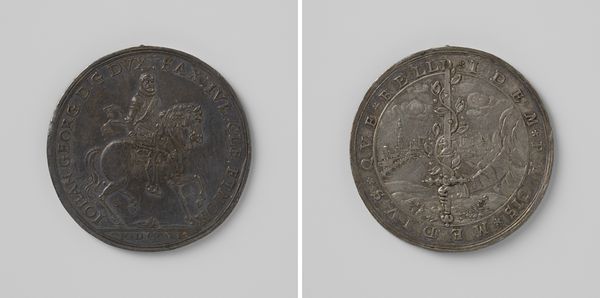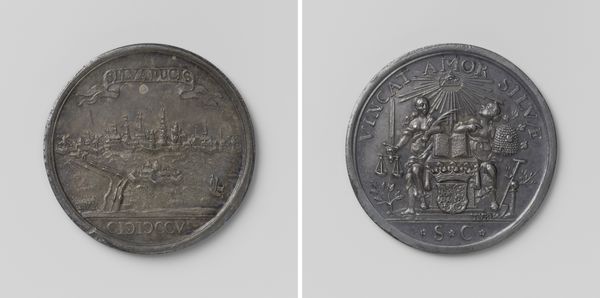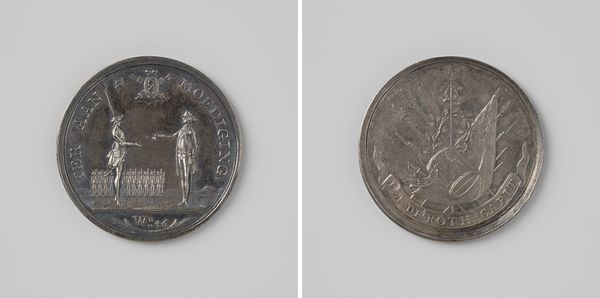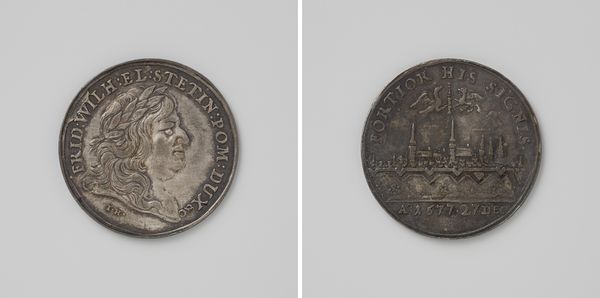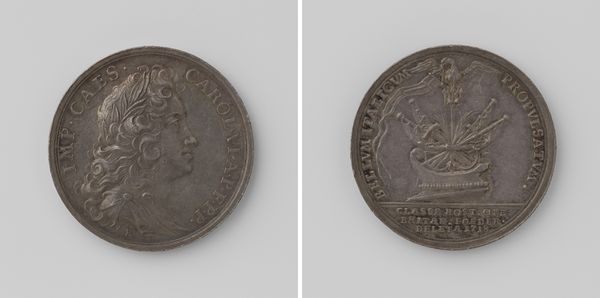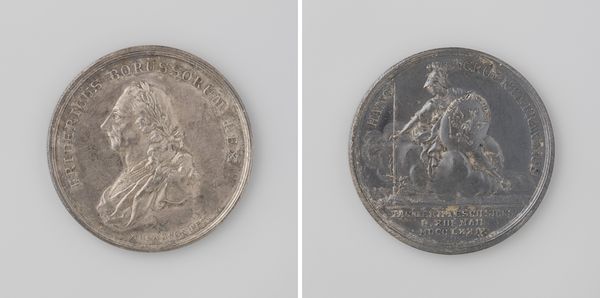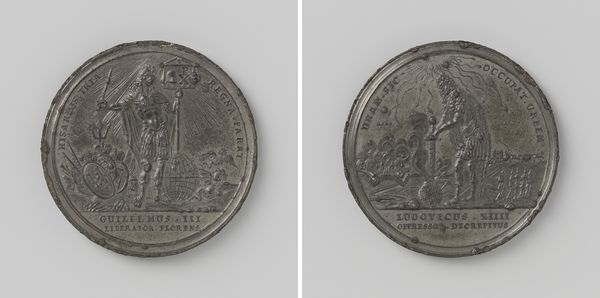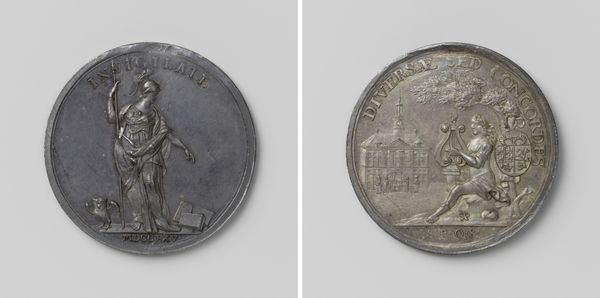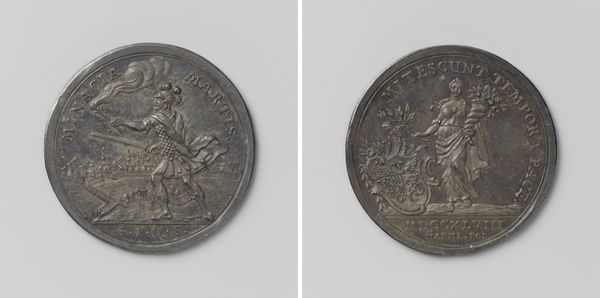
Prijspenning van het Zeeuws Genootschap van Wetenschappen, afgieting in tin zonder inscriptie c. 1769
0:00
0:00
Dimensions: diameter 6.0 cm, weight 61.83 gr
Copyright: Rijks Museum: Open Domain
Editor: Here we have Barend Christiaan van Calker's "Prijspenning van het Zeeuws Genootschap van Wetenschappen," from around 1769. It’s a tin cast of an award medal. The relief sculpture on the front feels almost theatrical in its composition. What catches your eye? Curator: The medium itself – tin – speaks volumes. It’s not gold or silver, the typical metals of prestige. This points to a specific socio-economic context. Who was being awarded, and why this material? Tin suggests utility, accessibility, perhaps even a statement about valuing practical science over abstract wealth. What was the function of these scientific societies? Editor: Good point! I believe these societies fostered research and innovation, but, so how does the tin connect? Curator: It signals the rising merchant class. The Zeeuws Genootschap's funding and audience likely came from those directly benefiting from applied sciences - improved navigation, land reclamation, and so forth. Think about where tin comes from, the labor involved, and how it ends up in the hands of these scientists. What kind of consumption cycle do you think this prize embodies? Editor: It makes me consider this piece not just as art but as an object deeply embedded in systems of labor and economic exchange, part of the social context for scientific production. Thank you! Curator: Indeed. The value isn't intrinsic, like with a precious metal. It derives from the processes, the labor, and the societal values it embodies. That makes it quite compelling, really.
Comments
No comments
Be the first to comment and join the conversation on the ultimate creative platform.
